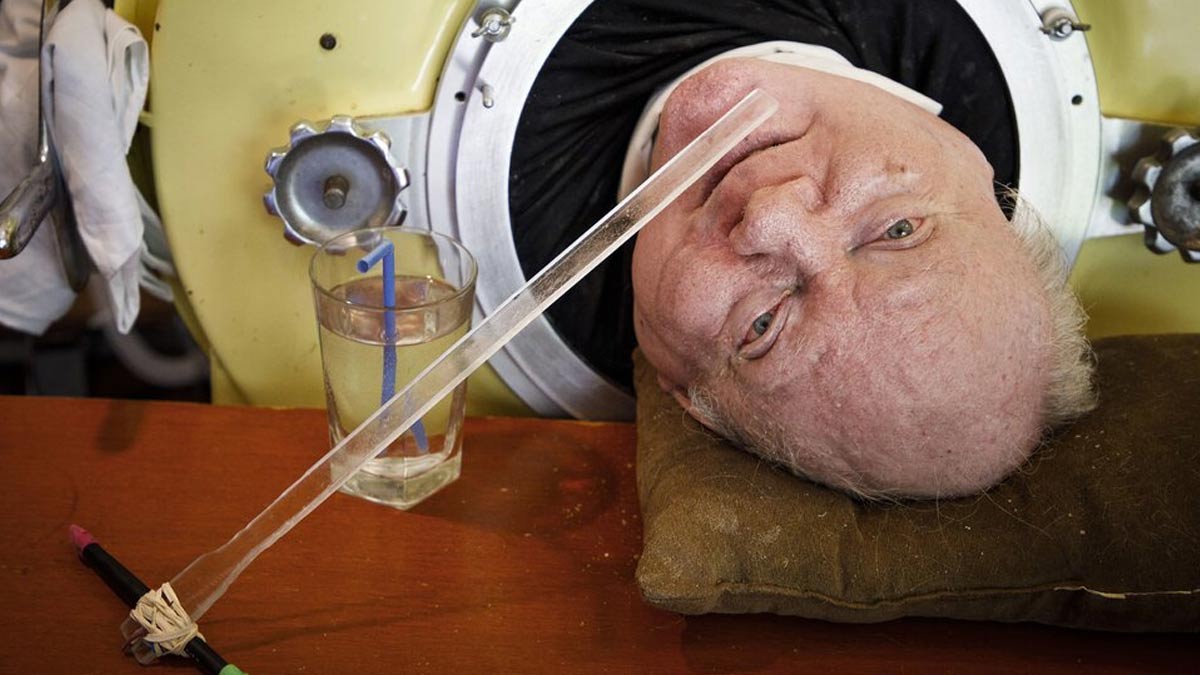
In the mid-20th century, when someone suffered an impaired respiratory system which made it impossible for them to breathe independently, they were put in a medical device called the 'Iron Lung.' The iron lung is essentially a long cylindrical tank, which encloses the entire body, except the head and the neck.
Table of Content:-
The Harvard TH Chan School Of Public Health shared that the iron lung was developed by Philip Drinker who invented the iron lung in 1928, to combat the deadly grip of the polio virus on the lungs. The technology which is now obsolete has only one surviving patient, Paul Alexander, who is known by the moniker 'Polio Paul,' and has been living inside the iron lung for the last 70 years. To understand the mechanism of an iron lung, the team of OnlyMyHealth spoke to Dr Samir Garde, Director of Dept of Pulmonology and Lung Transplant, Global Hospitals, Parel.
What Is An Iron Lung?

The iron lung was primarily used in the mid-20th century, especially during the polio epidemic, shared Dr Garde. As per the World Health Organisation, 'In the late 19th and early 20th centuries, frequent epidemics saw polio become the most feared disease in the world. A major outbreak in New York City in 1916 killed over 2000 people, and the worst recorded United States outbreak in 1952 killed over 3000.'
During this outbreak of 1952, Alexander was six years old and was diagnosed with polio, which left him paralysed from the neck down.
"Polio is a viral disease that can cause paralysis of the respiratory muscles, making it difficult or impossible for the patient to breathe," explained Dr Garde.
Also Read: Polio Case Detected In New York After Almost A Decade
"The iron lung offered a way to maintain respiration for such patients. It was also used for individuals with conditions like Guillain-Barré syndrome and certain types of spinal cord injuries, which could similarly affect respiratory function," he added.

Alexander, who now needed round-the-clock attention, was able to survive thanks to the iron lung and finished high school, earned a law degree and practised law for many years, all while living inside the device that had not been manufactured since the 1960s. He even holds a Guinness World Record for living in an iron lung for the longest time.
Also Read: Polio-free Countries including India still prone to Polio Says WHO’s Poonam Khetrapal Singh
Explaining the mechanism by which the iron lung functions, Dr Garde listed:
- The iron lung operates on the principle of negative pressure ventilation.
- A patient is placed inside a cylindrical, airtight chamber, with only their head exposed.
- The machine maintains a tight seal around the neck, and the chamber is connected to a pump.
- By changing the air pressure within the chamber, the machine creates a pressure difference between the patient's chest and the outside environment, causing the chest to expand and contract, mimicking the natural process of breathing.
Paul Alexander's achievements despite spending his entire life in an iron lung, is a testament to human endeavour and willpower in the face of the most unfair circumstances. Dr Garde concluded that these devices played a critical role in keeping patients alive when they couldn't breathe on their own. Thankfully, advancements in medical technology, such as the development of positive-pressure ventilators, have largely replaced the need for iron lungs, but they remain a symbol of the medical innovations that helped save countless lives during a time of health crisis.
Also watch this video
How we keep this article up to date:
We work with experts and keep a close eye on the latest in health and wellness. Whenever there is a new research or helpful information, we update our articles with accurate and useful advice.
Current Version